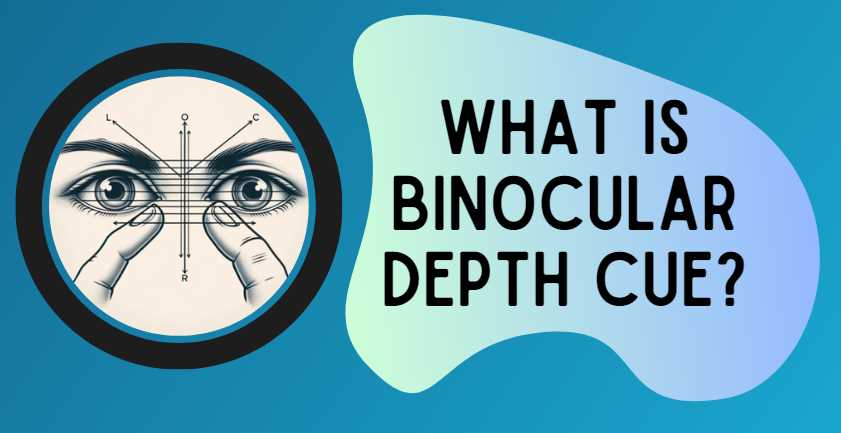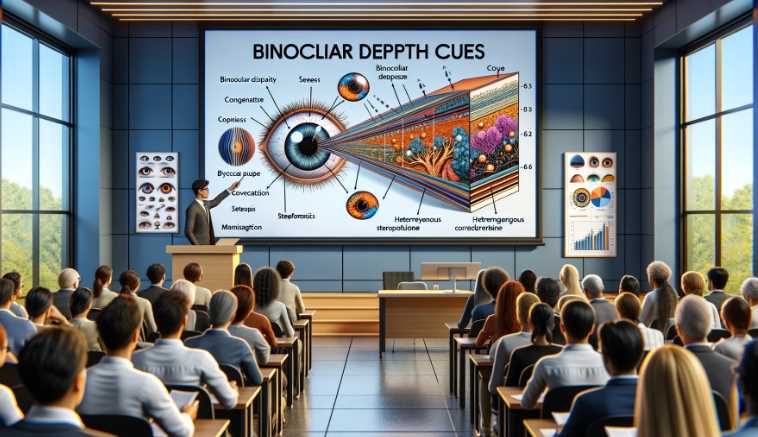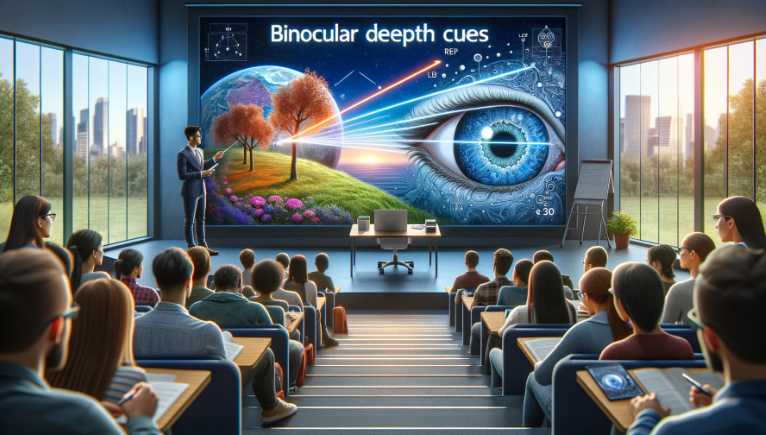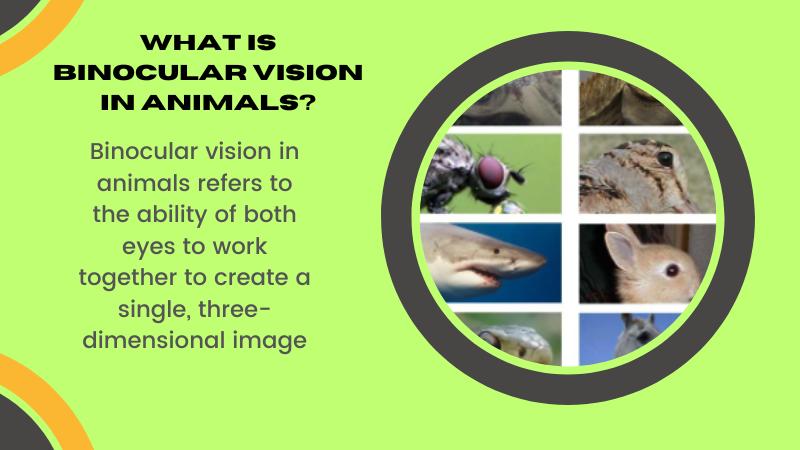Yes, convergence is a binocular cue to depth and distance.
Explanation: Convergence refers to the rotation of both eyes inwards to focus on a nearby object. The degree of convergence required provides the brain with information about the depth and distance of the object. When an object is close, the eyes converge more, and when it is far away, they converge less. This cue is particularly effective for objects within a short to moderate distance from the observer.
| Binocular Cue | Description | Example |
|---|---|---|
| Convergence | Rotation of both eyes inwards to focus on a nearby object | Reading a book, examining a small object up close |
| Stereopsis | Binocular disparity resulting from the retinal disparity | Viewing a 3D movie, perceiving depth in virtual reality |
Definition of Binocular Cues
To start our exploration, let’s define binocular cues. These are the cues our brain receives from both eyes, allowing us to perceive depth and distance. It’s like a tag team of information, where each eye contributes a unique perspective.
Everyday Applications
Understanding these cues is not just a scientific curiosity; it has practical applications in our daily lives. Whether it’s driving through traffic, catching a ball, or simply walking down the street, our brain seamlessly processes binocular information to make split-second decisions.

Binocular Cues Explained
Now, let’s dive deeper into the mechanics of binocular cues, the wizards behind our depth perception magic.
Binocular Disparity
Imagine watching a 3D movie with those special glasses. Each lens presents a slightly different image to your eyes, creating an illusion of depth. This difference in the images seen by the left and right eyes is what we call binocular disparity.
Role of Convergence
Adding to the spectacle is convergence, the synchronized movement of our eyes. As an object gets closer, our eyes converge, focusing on a point. The brain interprets this convergence, aiding in determining an object’s distance.
Binocular Convergence
This cue relies on the muscles in our eyes. When we focus on a near object, the eye muscles work together, making the eyes converge. This convergence provides crucial information about the proximity of the object.
Synergy with Monocular Cues
While binocular cues are the dynamic duo, they work hand-in-hand with monocular cues—those depth hints perceived with one eye. Together, they paint a complete picture of our surroundings.
Depth Perception in Action

Now, let’s see these cues in action through everyday examples that showcase the power of depth perception.
Driving Scenarios
Picture yourself driving. Binocular cues come into play as you judge the distance between your car and the vehicle ahead. The brain calculates the space, allowing you to maneuver through traffic safely.
Parking and Navigating Traffic
Parallel parking? No problem. Binocular cues assist in determining the distance between your car and the curb, making parking a breeze. Navigating through traffic becomes an intuitive dance with these depth-perception maestros at work.
Sports and Activities
Ever caught a ball mid-air? That’s your binocular cues working overtime. Whether it’s a baseball hurtling towards you or a soccer ball soaring through the air, your brain uses these cues to calculate the perfect catch.
Interacting in 3D Spaces
In 3D spaces, like crowded marketplaces or bustling city centers, binocular cues enable us to navigate effortlessly. Dodging obstacles and weaving through the crowd become second nature, thanks to our finely tuned depth perception.
The Neuroscience Behind Binocular Cues
To truly appreciate the marvel of binocular cues, let’s peek into the intricate workings of our brain.
Brain Processing of Binocular Information
Our visual cortex, the brain region responsible for processing visual information, plays a starring role. It interprets the signals received from both eyes, stitching together a seamless panorama of the world around us.
Individual Differences
Not all eyes are created equal. Variances in binocular vision among individuals contribute to differences in depth perception. Understanding these individual nuances sheds light on why some people might excel in tasks requiring precise depth judgment.
Advantages and Limitations
Binocular cues come with their set of strengths and weaknesses. Let’s weigh the pros and cons.
Advantages of Binocular Cues
Enhanced depth perception tops the list. Imagine a world where every step feels uncertain—binocular cues eliminate that uncertainty. Additionally, they contribute to improved spatial awareness, a key component of our ability to interact with our environment.
Limitations and Challenges
However, it’s not all sunshine and rainbows. Binocular cues face challenges in specific conditions, such as low-light environments. Moreover, cognitive and age-related limitations can impact the accuracy of depth perception.
Practical Applications

Beyond the realm of daily life, binocular cues find applications in technology and education.
Technological Applications
Ever experienced virtual reality (VR) or augmented reality (AR)? Binocular cues are the backbone of these immersive experiences. They recreate a three-dimensional environment, fooling our brain into believing we are in a different reality.
Medical Applications
In the medical field, understanding binocular cues is crucial for eye examinations. Optometrists leverage these cues to diagnose and treat various vision-related issues, ensuring our eyes stay in top-notch condition.
Educational Implications
In the realm of education, binocular cues play a pivotal role. Teaching depth perception in schools lays the foundation for understanding complex concepts in various subjects. Moreover, in fields like art and design, a grasp of binocular cues is indispensable for creating visually impactful work.
Studies and Research Findings
The journey of understanding binocular cues wouldn’t be complete without exploring the rich landscape of studies and research.
Overview of Key Studies
Historical studies laid the groundwork for our comprehension of binocular cues. As technology advances, contemporary research delves into new frontiers, pushing the boundaries of our knowledge.
Controversies and Debates
Yet, the scientific community is not without its debates. Disagreements persist, fueling ongoing research and opening doors to new discoveries. The journey to unravel the intricacies of binocular cues is an ever-evolving quest.
Practical Experiments and Demonstrations
Let’s make our exploration hands-on. Simple experiments can bring the magic of binocular cues to life.
DIY Experiments
Grab a couple of household items and embark on a journey of discovery. DIY experiments allow you to witness binocular cues in action, providing a tangible connection to the theoretical knowledge we’ve covered.
Importance of Hands-On Learning
These experiments bridge the gap between theory and practice, encouraging curiosity and exploration. Hands-on learning transforms abstract concepts into tangible experiences, leaving a lasting imprint on our understanding.
How do Binocular Cues contribute to depth perception?
Binocular cues play a crucial role in depth perception by leveraging the differences in the images captured by each eye. This stereoscopic vision enables the brain to interpret the slight variations in perspective, aiding in the perception of three-dimensional space.
| Binocular Cue | Description |
|---|---|
| Convergence | Eyes converge inward for near objects |
| Binocular Disparity | Difference in image location between the eyes |
Can binocular cues be used for long-distance depth perception?
While binocular cues are effective for short to moderate distances, they become less reliable for objects farther away. Monocular cues, such as relative size and atmospheric perspective, become more dominant in providing depth information for long-distance perception.
| Distance | Dominant Cues |
|---|---|
| Short-Medium | Binocular Cues |
| Long | Monocular Cues |
What is convergence, and how does it contribute to depth perception?
Convergence refers to the inward turning of both eyes to focus on a nearby object. The degree of convergence provides the brain with information about the object’s proximity. The closer the object, the greater the convergence, enhancing the perception of depth.
| Object Distance | Convergence Degree |
|---|---|
| Near | High convergence angle |
| Far | Low convergence angle |
How does binocular disparity create depth perception?
Binocular disparity results from the eyes’ horizontal separation, causing each eye to have a slightly different perspective. The brain interprets the variance in these images to determine an object’s depth, with greater disparity indicating closer objects.
| Object Depth | Binocular Disparity Effect |
|---|---|
| Close | High binocular disparity |
| Distant | Low binocular disparity |
Do individuals with vision impairments experience binocular cues differently?
Yes, individuals with vision impairments, particularly those with conditions affecting one eye, may experience challenges in utilizing binocular cues. The brain heavily relies on input from both eyes for accurate depth perception, and the absence of stereoscopic vision can impact the effectiveness of binocular cues.
| Vision Status | Binocular Cue Adaptation |
|---|---|
| Normal Vision | Effective use of binocular cues |
| Impaired Vision | Limited reliance on binocular cues |
Can age affect the utilization of binocular cues?
Age-related changes in vision, such as reduced flexibility and focusing ability, may influence the effectiveness of binocular cues. Elderly individuals may experience challenges in convergence and binocular disparity, leading to altered depth perception.
| Age Group | Binocular Cue Impact |
|---|---|
| Young | Optimal utilization of binocular cues |
| Elderly | Potential decline in binocular cue efficacy |
Is it possible to improve binocular cue utilization through training?
Yes, specific vision therapies and exercises aim to enhance binocular vision. These interventions improve convergence, strengthen eye muscles, and promote eye coordination, ultimately contributing to better depth perception.
| Intervention | Effect on Binocular Cue Enhancement |
|---|---|
| Vision Therapy | Improved convergence and coordination |
| Eye Exercises | Strengthening of eye muscles |
Are there natural ways to enhance binocular cues?
Engaging in activities that require depth perception, such as sports and outdoor games, can naturally stimulate binocular vision. Additionally, maintaining overall eye health through regular eye check-ups and a balanced lifestyle contributes to the optimal functioning of binocular cues.
| Lifestyle Factor | Impact on Binocular Cue Enhancement |
|---|---|
| Physical Activity | Stimulates depth perception |
| Eye Health | Supports optimal binocular cue function |
Is it true that everyone perceives depth the same way using binocular cues?
Contrary to popular belief, individuals may interpret depth differently due to variations in eye health, vision conditions, and neurological factors. While binocular cues offer a stereoscopic view, personal factors can influence the subjective experience of depth.
| Individual Factors | Influence on Depth Perception |
|---|---|
| Vision Conditions | Varied interpretation of depth |
| Neurological Factors | Individual depth perception |
Can wearing corrective lenses affect binocular cue utilization?
Wearing corrective lenses can positively impact binocular cue utilization by providing clearer vision. However, individuals with significant vision disparities between the eyes may experience challenges in achieving optimal binocular vision, even with corrective lenses.
| Vision Correction | Effect on Binocular Cue Utilization |
|---|---|
| Corrective Lenses | Improved clarity, potential enhancement |
| Vision Disparities | Challenges in achieving optimal binocular vision |
How are binocular cues applied in virtual reality (VR) technology?
In virtual reality applications, developers leverage binocular cues to create a more immersive experience. By replicating natural depth perception through techniques like stereoscopic rendering, VR environments can simulate real-world depth, enhancing the overall user experience.
| Technology Application | Binocular Cue Utilization |
|---|---|
| Virtual Reality (VR) | Stereoscopic rendering for depth |
| Augmented Reality (AR) | Integration of binocular cues |
Can pilots benefit from binocular cues in aviation?
Pilots rely on binocular cues for depth perception during flight. The ability to accurately judge distances is crucial for safe take-offs, landings, and mid-air navigation. Understanding binocular cues aids pilots in making precise spatial judgments.
| Aviation Context | Binocular Cue Importance |
|---|---|
| Take-offs/Landings | Critical for precise judgments |
| Mid-air Navigation | Enhances spatial awareness |
Are there ongoing research efforts to improve binocular cue utilization?
Researchers are actively exploring advanced technologies to enhance binocular cues. Developments in eye-tracking technology, neural imaging, and artificial intelligence aim to optimize the integration of binocular information, leading to improved depth perception and virtual environments.
| Research Area | Potential Impact on Binocular Cue Enhancement |
|---|---|
| Eye-Tracking Tech | Precise measurement of convergence and disparity |
| Neural Imaging | Understanding neurological aspects of binocular vision |
| AI Integration | Enhanced interpretation of binocular cues |
Can future technologies eliminate the limitations of binocular cues?
While advancements continue, the complete elimination of binocular cue limitations may be challenging. However, ongoing research aims to address specific challenges, such as improving depth perception in virtual environments and optimizing binocular cues for individuals with vision impairments.
| Technological Goal | Challenges Addressed |
|---|---|
| Enhanced Depth VR | Improved depth perception in virtual reality |
| Vision Impairments | Tailoring binocular cues for impaired vision |
Conclusion
In conclusion, our journey through the realm of binocular cues has been enlightening. We’ve peeled back the layers, exposing the intricacies of how our eyes collaborate to provide us with a vivid, three-dimensional view of the world. As we navigate our daily lives, let’s carry this newfound knowledge, appreciating the silent symphony of binocular cues that guides us through the depth of our existence.

I am an enthusiastic student of optics, so I may be biased when I say that optics is one of the most critical fields. It doesn’t matter what type of optics you are talking about – optics for astronomy, medicine, engineering, or pleasure – all types are essential.
Table of Contents

Pingback: What is the difference between monocular and binocular depth cues?